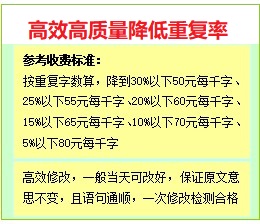A. Literature review
Translation is a necessary communicative behavior in the history of human civilization, which promotes the development and dissemination of culture. With the continuous development and expansion of China in recent years, more and more foreign friends come to China for sightseeing. However, the development of Chinese and foreign social history and culture makes great differences in the translation of human geography. During the study, the author found many differences in cultural logic thinking in the introduction and translation of tourist attractions.
一、Current situation of translation in China
In many translations, translators blindly submit to the cognitive habits of foreigners in the whole process of translation and fail to spread Chinese culture to the greatest extent. Want to hold good processing of cultural elements in translation, translator need to have a deep faith of local culture, which is to fully affirmed the native culture. For example; “断桥残雪” is introduced in the online translation for the Broken Bridge on the West Lake [百度百科]. It is completely to cater to the western spoken language to translate. The Broken is the Broken or Broken. A scenic spot with such a famous and beautiful story is translated into a damaged one.
二、Build cultural confidence in the text translation of scenic spots introduction
Scenic spot introduction text mainly involves three purposes or functions; Information function, call function and aesthetic function. Mainly on the aesthetic function; The aesthetic function is embodied in the unique language style of such texts and the heritage of Chinese culture. In the process of language conversion, the translator is the cultural communicator and at the same time carries on cultural communication. Therefore, in the translation of scenic spot introduction text, translators need to make full use of local culture. Cultural confidence does not mean cultural conceit. It is necessary to respect the beliefs and aesthetic habits of foreigners and consider the expectations and needs of the audience. There are many references in the translation of the introduction text of scenic spots in Hangzhou. For example; Hangzhou famous a bus site “立马回头” back immediately, translation is < Li Ma Hui Tou >.
B. Outline format
1 The introduction
1.1 Significance of topic selection
1.2 The importance of Chinese culture in translation
2 The cultural differences
2.1 The Chinese culture
2.1.1 Attractions introduction text in the advantages
2.1.2 Attractions introduction text in the difficult
2.2 Western culture
2.2.1 Western reading logic
2.2.2 Inculcate Chinese culture
2.3 Summary
3 Case analysis
3.1 An introduction to the text translation analysis
3.1.1 Advantages of the status quo
3.2 Deficiencies of the present situation
3.2.1 How to change deficiencies
3.3 Summary
4 Cultural transmission
4.1 How to use scenic spot introduction text for cultural communication
4.2 The importance of cultural communication
4.3 Key points of cultural communication
4.4 The relationship between culture and communication
4.5 Summary
5 Conclusion
C. 参考文献
[1] Nida, Eugene A. Towards a Science of Translating. Shanghai: Shanghai Foreign Language Education Press, 2004.
[2] The American Heritage Dictionary. Orlando: Houghton Mifflin Harcourt, 2006.
[3] Samovar & R.E Porter. Communication between Cultures. Beijing: Foreign Language and Research Press, 2000.
[4] Nida, Eugene A. & Charles R, Taber. The Theory and Practice of Translation. Shanghai: Shanghai Foreign Language Education Press, 2004.
[5] Nida, Eugene A. Language and Culture: Context in Translating. Shanghai: Shanghai Foreign Language Education Press, 2001.
[6] 孙英春,2008,《 跨文化传播学导论》[M],北京:北京大学出版。
[7] 谭载喜,2000,《翻译学》[M],武汉:湖北教育出版社。
[8] 金惠康,罗向阳.汉英旅游服务实用手册[Z].广州:广东旅游出版社,2006.
[9] 谢前明,史玉仙. 《西湖地名》 杭州:杭州出版社,2006.
[10] 文军,邓春,辜涛,蒋宇佳. 信息与可接受度的统一 —— 对当前旅游翻译的一项调查与分析. 上海科技翻译,2002(1):49-52.
[11] 肖洪根. 谈我国旅游文化特有事物名称英译的标准化和规范化. 北京第二外国语学院学报,1996(6).
[12] 张建庭. 《西湖八十景》 杭州:杭州出版社,2005.
[13] 张宁. 旅游^^文档翻译中的文化思考. 中国翻译, 2000(5):54-56.
[14] 包惠南. 实用文化翻译学[M]. 上海科学普及出版社,2000.
[10]贾文波. 旅游翻译不可忽视民族审美差异[J]. 上海科技翻译,2003( 1) .
[11]徐福江.汉英文化差异与西湖景点介绍的翻译—从奈达的功能对等理论角度[J].贵阳学院学报(社会科学版),2009(2)
[12] 汉英文化差异与西湖景点介绍的翻译—从奈达的功能对等理论角度.年度校级研究生科研项目。2008年12月12日~2009年12月12日


